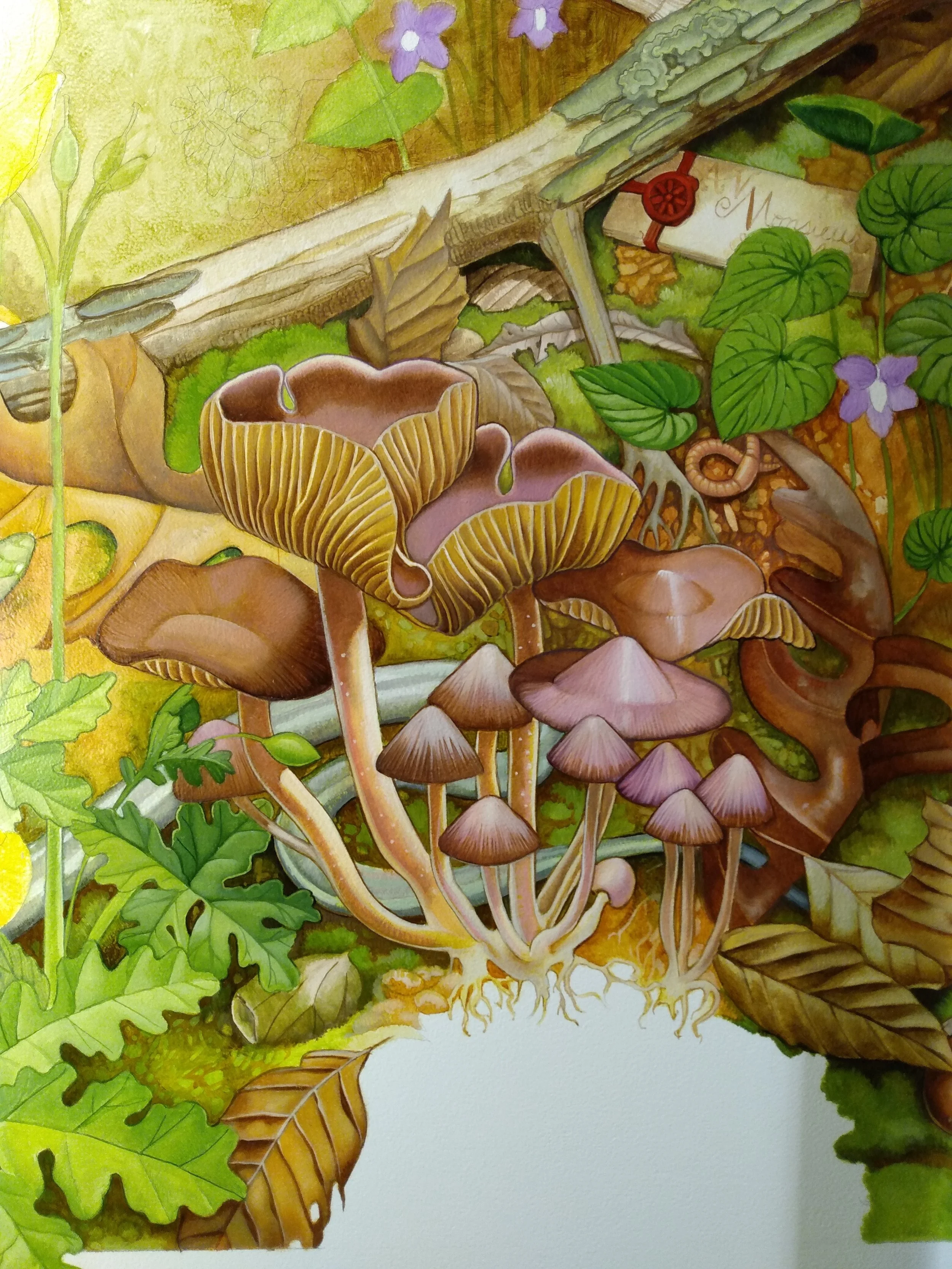I’m often asked: “How do you break into the field of illustration? How do you make an illustration portfolio?” so I‘ve written about this strategy more than once. I used a similar method when I was developing a portfolio in my late teens to break into the industry. It’s been tested to be effective.
A freelance illustrator needs to develop a cohesive portfolio. If you’ve been making images for a while and are acquiring many that are showing a personal style and content (cohesion), then choosing 10 that rise to the top will be a snap. However, if you’re new at this and unsure, you’ll need to contemplate your ideas first. When I was teaching advanced and more independent illustration students working on heir senior show requirement, I would have them do the following exercise:
1. Make a list of 100 ideas for potential works. Students would find that they tended to gravitate to certain themes and subject matter that was most interesting to them. Time frame: 2 days.
2. Cherry pick your best, most exciting, top 25 ideas from the list and make design thumbnails and then loose sketches. Pay attention to varying the perspective in each. This group of top 25 will generally be cohesive in theme and suggest a loose, non-linear story quality. Think of them as images in a series. Time frame: 2 weeks.
3. Cherry pick the top 10 from this list and go to color/paint (or some kind of finished rendering in digital or analog media). Pay attention to where you repeat some stylistic choices and vary others. Unless you have a good reason to use different media for the images, try to stick with the same kind of medium (eg oils) . Time frame: 3 months (or more, depending on the complexity, media, and scale of the works).
I used this method again for my senior thesis in grad school and started with a list of 150 ideas. In 5 months I ended up with 50 finished drawings (in graphite). Of those 50 drawings, 6 of them later became larger paintings.
The above exercise is similar to Inktober's prompts where artists use the online suggestions to create and share lightning-fast works in ink. Here, in this strategy, you have the opportunity to create your own unique prompts. Your initial list should not be over-analyzed. The second step of sketching can be as lightweight as a pencil sketch or more definitive and loose. The idea is to speedily nail down a composition, let go of perfectionism, and lean on perspective & important design elements to sell the story idea.
The last phase of completing and rendering the compositions should feel like icing a cake. Once you have composition and design in hand, you can decide which medium you'll use and then you can develop the value structure implied in the sketch. Color composition is an important part of the story so be sure to use that effectively to build implicit meaning into the work.
And before you know it, you'll have 10 great portfolio pieces that are thematically related, and your work will feel consistent in its visual appeal.
Have you ever used this strategy? Share your thoughts with me in the comments below.
